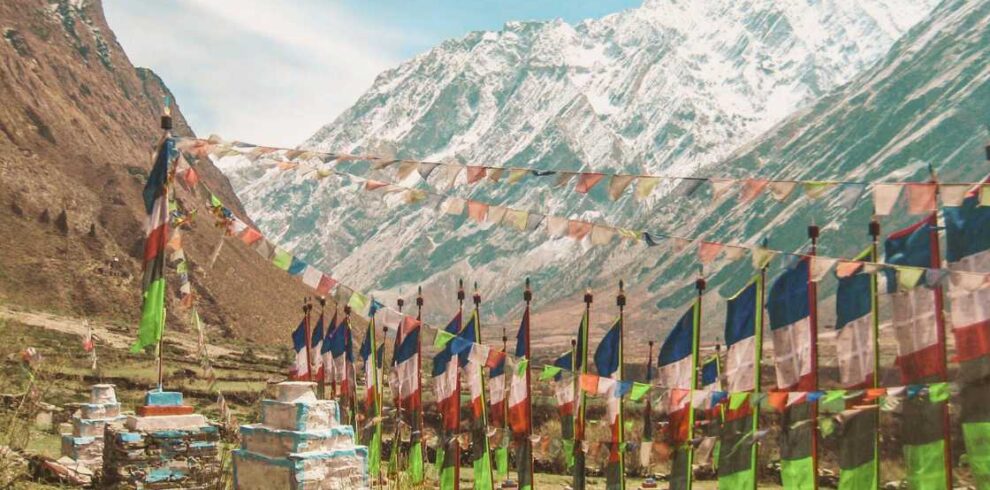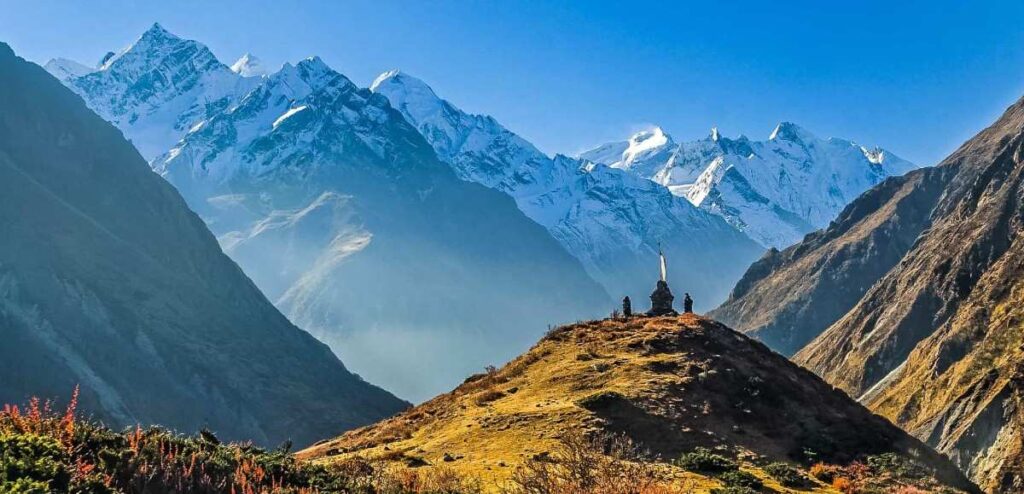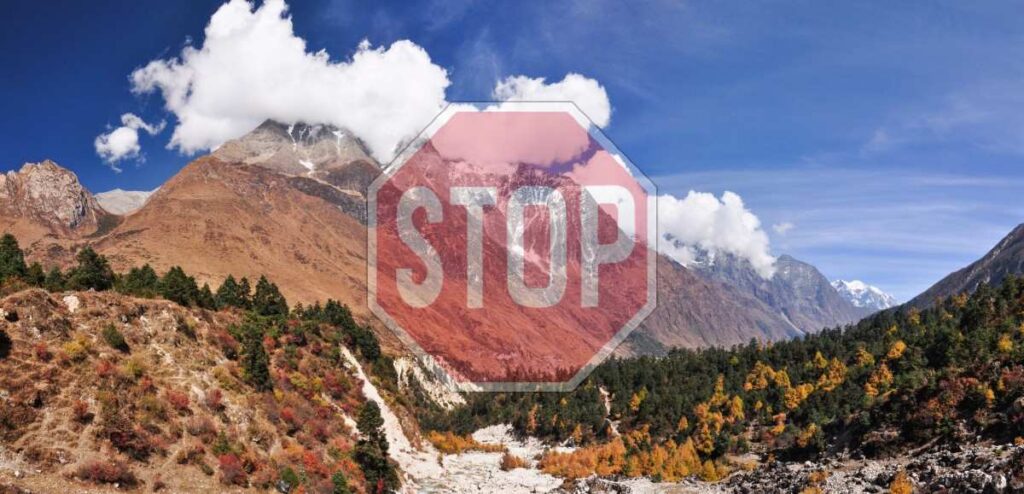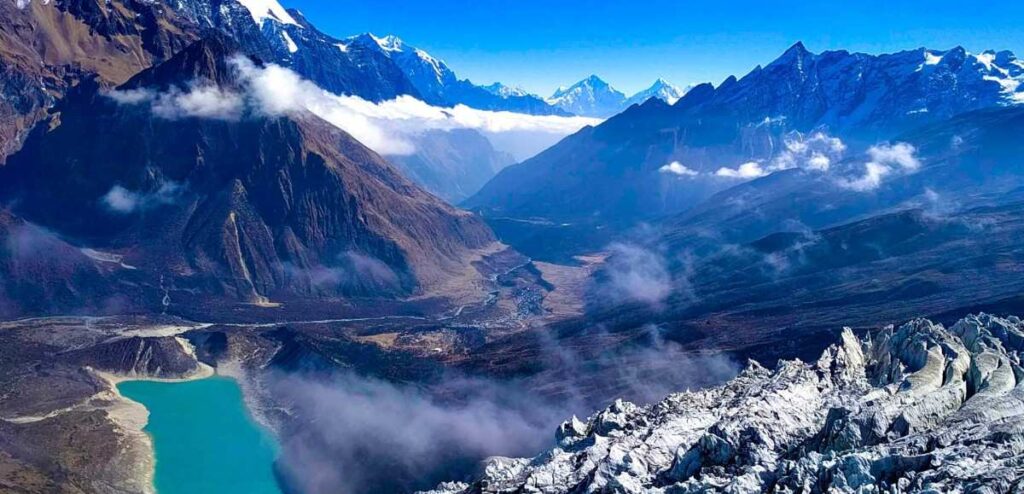 Nepal is known for its spectacular trekking routes. While many are familiar with the Everest and Annapurna circuits, the Tsum Valley Trek offers a more secluded and culturally enriching experience. In the northern Gorkha district, Tsum Valley is a sacred Himalayan pilgrimage valley that has long been hidden from the world. This guide will take you through everything you need about the Tsum Valley Trek—from preparation to what you can expect on the trail.
Nepal is known for its spectacular trekking routes. While many are familiar with the Everest and Annapurna circuits, the Tsum Valley Trek offers a more secluded and culturally enriching experience. In the northern Gorkha district, Tsum Valley is a sacred Himalayan pilgrimage valley that has long been hidden from the world. This guide will take you through everything you need about the Tsum Valley Trek—from preparation to what you can expect on the trail.
Overview of Tsum Valley Trek
- Duration: 14 to 21 days, depending on your itinerary
- Max Elevation: 3,700 meters (Mu Gompa)
- Trek Difficulty: Moderate to challenging
- Best Season: March-May, September-November
- Permits Required: Special Restricted Area Permit, Manaslu Conservation Area Permit (MCAP), Annapurna Conservation Area Permit (ACAP)
The Tsum Valley Trek takes you through remote villages, pristine forests, ancient monasteries, and stunning views of the Himalayas. Unlike other treks, Tsum Valley offers a deep dive into Tibetan Buddhist culture, with the region largely untouched by modern development.
Why Choose Tsum Valley Trek?

- Cultural Experience: Tsum Valley is predominantly inhabited by Tibetan Buddhists, and the valley is home to many ancient gompas (monasteries) and religious sites, including Mu Gompa and Rachen Gompa.
- Off-the-Beaten-Path: Compared to the more popular trekking routes, Tsum Valley remains relatively isolated. You'll experience unspoiled nature and fewer trekkers along the trail.
- Rich History: The valley has been a center for Buddhist teachings for centuries, and the traditional lifestyle of the people is deeply rooted in their religious beliefs.
Preparing for the Tsum Valley Trek
1. Permits
 Before embarking on the trek, you will need to obtain:
Before embarking on the trek, you will need to obtain:
- Restricted Area Permit for Tsum Valley: This permit costs around USD 35 for the first eight days during the peak season (September-November), and USD 25 during the off-season. Each additional day will incur extra costs.
- Manaslu Conservation Area Permit (MCAP) and Annapurna Conservation Area Permit (ACAP): These can be acquired in Kathmandu or at the start of the trek.
Since Tsum Valley is a restricted region, you must trek with a registered guide and in a group of at least two people.
2. Physical Preparation
Tsum Valley Trek is moderately challenging. You will be trekking between 5 to 8 hours a day, often on steep ascents and descents. While the elevation doesn’t reach the extremes of other Himalayan treks, acclimatization is still essential.
- Cardiovascular endurance: You should engage in cardio workouts such as running, hiking, or cycling in preparation for the trek.
- Leg strength: Train with lunges, squats, and stair climbing exercises to build leg muscles.
- Trekking experience: While prior trekking experience isn’t mandatory, it’s beneficial to have completed shorter treks or hikes before attempting the Tsum Valley route.
3. Packing Essentials
- Trekking boots: Make sure you have sturdy and comfortable hiking boots.
- Layered clothing: The weather can vary drastically, so pack layers—thermal base layers, fleece, and a waterproof jacket.
- Sleeping bag: While tea houses offer basic accommodation, having a sleeping bag rated for cold weather ensures a comfortable night’s rest.
- Trekking poles: These can ease the strain on your knees during steep descents.
- First Aid kit: Include altitude sickness medication, painkillers, and bandages for blisters.
The Trekking Route
The Tsum Valley Trek typically starts from Arughat or Soti Khola, where you'll follow the Manaslu Circuit for the first few days. The route gradually leaves the main Manaslu Trail as you enter the mystical Tsum Valley. Here's a breakdown of the highlights and major stops:
Day 1: Kathmandu to Arughat/Soti Khola
The journey begins with a scenic drive from Kathmandu to Arughat, a small town on the banks of the Budhi Gandaki River. From here, a short drive takes you to Soti Khola, the starting point of the trek.
Day 2-4: Soti Khola to Philim
The trail begins with a steady climb, following the Budhi Gandaki River. You'll trek through forests, terraced fields, and small villages like Machhakhola and Jagat before reaching Philim, the gateway to Tsum Valley.
Day 5-6: Philim to Chumling
As you leave the main trail and enter Tsum Valley, you'll notice the change in landscape and culture. Trekking to Chumling involves traversing through lush forests and crossing suspension bridges. Here, you’ll start seeing signs of Tibetan influence in the architecture and culture.
Day 7-9: Chumling to Chhokang Paro
The trail continues to the upper valley, with magnificent views of Ganesh Himal and the surrounding peaks. The villages of Chhokang Paro are known for their ancient gompas and monasteries, and this area is one of the cultural highlights of the trek.
Day 10-12: Mu Gompa and Rachen Gompa
This section of the trek takes you to the farthest reaches of Tsum Valley. Mu Gompa, situated at 3,700 meters, is the highest point on the trek and offers panoramic views of the Himalayas. Nearby Rachen Gompa is a nunnery that’s worth a visit for its spiritual significance.
Day 13-14: Return to Philim
After exploring the upper reaches of Tsum Valley, you’ll retrace your steps to Philim and reconnect with the Manaslu Circuit trail. The return journey provides a different perspective on the valley as you descend through the same landscapes.
Day 15-18: Philim to Soti Khola/Kathmandu
The last few days of the trek take you back through the lower sections of the valley before returning to Soti Khola and finally back to Kathmandu by bus or jeep.
Accommodation and Food
The Tsum Valley is not as developed as other trekking regions, so accommodation is more basic. Tea houses are the primary form of lodging, offering simple rooms with twin beds. Meals are typically traditional Nepali fare, such as dal bhat (lentil soup with rice), noodles, and Tibetan bread. Make sure to bring some snacks for energy during the day, as food options can be limited in some of the more remote areas.
Best Time to Trek Tsum Valley
 The best seasons for trekking in Tsum Valley are spring (March to May) and autumn (September to November). During these months, the weather is stable, offering clear skies and pleasant temperatures. The monsoon season (June to August) brings heavy rainfall, making the trails muddy and difficult. Winter (December to February) is possible for trekking, but the high passes and some tea houses may be closed due to snow.
The best seasons for trekking in Tsum Valley are spring (March to May) and autumn (September to November). During these months, the weather is stable, offering clear skies and pleasant temperatures. The monsoon season (June to August) brings heavy rainfall, making the trails muddy and difficult. Winter (December to February) is possible for trekking, but the high passes and some tea houses may be closed due to snow.
Cultural Etiquette in Tsum Valley
The people of Tsum Valley follow Tibetan Buddhist customs, and it’s important to respect local traditions:
- Always walk clockwise around chortens (Buddhist shrines) and mani walls.
- Ask for permission before taking photographs of people or religious sites.
- Dress modestly, especially when visiting monasteries.
Conclusion
The Tsum Valley Trek offers a rare combination of cultural immersion and natural beauty, making it one of the most rewarding treks in Nepal. If you're seeking an off-the-beaten-path adventure with spiritual and cultural depth, Rolling Adventure Holidays is a perfect choice to book this trek. From its ancient monasteries to the awe-inspiring views of the Himalayas, Tsum Valley is a hidden gem waiting to be discovered.
Whether you're an experienced trekker or new to high-altitude hiking, the Tsum Valley Trek promises an unforgettable journey into the heart of one of Nepal's most sacred regions.
Comments on “A Complete Guide to Tsum Valley Trek: Exploring Nepal’s Hidden Gem”